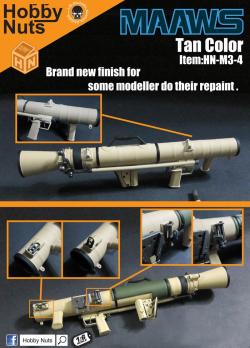Rps 6 Rocket Launcher
「Name」-RPS-6 Rocket Launcher ☠ ◢–Type of Weapon–◣-RPG【Size】▁▂▃▄▅▆▇█▇▆▅▃▂▁◖Height◗-Unknown◖Width◗-Unknown◖Length◗-Unknown◖Weight◗-Unknown┗━━━━━━━━━━━━━━┛▄▄▄▄▄▄▄▄▄▄▄▄▄▄【Firearm Actions】-Unknown☆═━Ammunition━═☆【Ammunition Capacity】-6 Rockets【Type of Ammunition】-Rockets【Ammunition Size】-Unknown【Fire Mode】-Single Shot【Rate of Fire】-Single Shot【Accuracy】-Unknown【Reliability】-Unknown【Max Range】-Unknown【Effective Range】-Unknown【Muzzle Velocity】-Unknown▄▄▄▄▄▄▄▄▄▄▄▄▄▄ ☠ ◢–Lore–◣┍━━━━━━━━━━━━━━┑►Description◄-The RPS-6 rocket Launcher was produced by Merr-Sonn Munitions Inc. During the time of the Clone Wars. It fired rockets from a magazine of six. The rocket was capable of destroying vehicles protected by ray shields, but were ineffective against Umbaran.►Manufacturer◄-Merr-Sonn Munitions Inc.►Designer◄-Merr-Sonn Munitions Inc.┕━━━━━━━━━━━━━━┙All information is provided by Wookieepedia.
Rocket Launcher Buy
Summer is here, and I was looking for something to do with the kids. They raved about how much fun the rocket launching was at in San Mateo, and I wanted to bring a little bit of that fun home. All I needed to do was build my kids the kit version of compressed air rocket launcher that was featured in MAKE Volume 15.This is a really easy build, and the rockets go amazingly high! That’s a great question that I can’t answer. Because the rockets went so high, that I could barely see them anymore.
I guess that’s high enough! If you know a way to measure the height, let me know in the comments. I know of a few ways, but I’d like to hear your suggestions too!Note: You can build the launcher from Rick Schertle’s plans in. The kit includes a copy of, all the electronics, and the PVC parts cut to length. All you need are a few simple tools, glue, and tape.What you need:. Tape, duct or similar re-enforced.
Bicycle pump. Pliers, channel-lockTime to build: about 1-2 hoursDifficulty: Easy!The from the has a few changes that make it more portable.
I’m not going to go over every last detail of the build, because they are all in the magazine, but I will cover the changes and some of the modifications that I made to my rockets.Let’s get started: Build the pressure chamberStart by adding the Teflon tape to the reducer fitting and screwing it into the threaded PVC reducer cap. Use an adjustable wrench to tighten.Next, using some more Teflon tape and screw the brass barbed fitting into the reducer fitting.Simple!Now it’s time to start gluing the PVC parts together.
We are going to add the piece we just made to the PVC tee as described in the directions.The process is the same at every connection. First wipe the connection with primer. I chose clear, but purple is more common. Now add the glue. Any PVC glue is OK to use. I used “extra strength” but the standard variety is fine too. Make sure to work fast, and give the parts a little twist during the joining process.Now glue the 10″ long PVC pipe into the other end of the PVC tee as described in the directions.Followed by gluing on the end-cap to the 10″ piece of PVC.The launching system:Start building the launching system by wrapping Teflon tape around each of the 3/4″ male threaded x 3/4″ female slip PVC adapters.Attach each adapter to the sprinkler valve, and tighten with channel-lock pliers.Take note of the arrows on the sprinkler valve.
On the “out” side of the valve, glue a 16″ length of PVC pipe. On the “in” side of the valve, glue a 3″ length of PVC.Now glue on the reducer slip fitting on the top of the PVC tee connector as described in the directions.Followed by gluing on the sprinkler valve assembly you just made.Building the improved stand:The kit has a stand that is different than described in MAKE Volume 15. It’s more portable, and easier to build. Start by measuring 6 1/2″ from each side of the include 16″ lengths of PVC pipes. Next drill 1/8″ holes completely through the PVC pipes at those locations.Now enlarge the holes with a 1/2″ bit, but only on one side of the PVC (this is now the “top side”). Do not drill all the way through!Feed 1 end of the included zip-ties into one of the 1/2 holes.
Next, use a small screwdriver inserted into the back of the PVC pipe and push the zip-tie up into the other 1/2 hole you just drilled. Sound complicated? It’s not!Don’t attach the legs yet! We have to wrap the air chamber in duct tape first.

We’ll do that in a bit.Building the electronicsLet’s start by building the launch handle. It houses the electronics and allows you to fire it from a safe distance. First, drill an 1/8″ hole in 1 of the PVC end caps, and a 1/2″ hole in the other end cap.Solder the (2) supplied wires to the button. I added some heat-shrink tubing for added security.Add the button to the end cap with the 1/2″ hole. It’s a little tricky to screw in the retaining nut since it’s a tight squeeze.Now feed the wires through the 4″ section PVC pipe.
I added a small nut to the wires. It makes it hard to pull the wires out of the handle. Just loop the wires around 2-3 times about 1″ from the end of the PVC pipe. Next, feed the wires through the other end-cap.
No need to glue any of these pieces.To make the wires look neat, I clamped them in a drill and twisted them together. You can do this by hand, but the drill makes fast work of it.1-2 seconds later and I have a nice length of twisted wire! The controller is done.
Now lets mover on to the power supply.Building the power supplyThe power supply is fairly straightforward. Start by soldering (1) red wire from the battery clip to (1) black wire of the another battery clip. I cut my wires a little short and used some heat-shrink tubing for added security.Next, solder (1) of the remaining wires from the batter clips to (1) wire of the launch controller. The remaining battery clip wire is soldered to (1) wire of the sprinkler valve. The last connection is made by soldering the remaining sprinkler valve wire to the remaining launch controller wire.

It may sound tricky, but it’s a really simple circuit. Check out the instructions for more details.Building the air supply connectionsThe first thing you need to do is remove the rubber housing from the air valve.I found that using (2) pairs of pliers and rotating them around the valve stem made the rubber come right off.
Easy!Place the included crimp on one end of the tube, along with the valve stem, and crimp the “ears”. This makes a very strong connection.The other end gets attached to the launcher and is held in place with a zip-tie.Wrapping up the air chamberYou should wrap the air chamber in duct tape. The PVC is under a lot of pressure, and in the even of a failure, the tape will help contain the parts.You can find duct tape in many different colors now. I saw rainbow, camouflage, and even flower patterns.
In the end I chose a nice medium blue. Wrap everything in at least 3 layers of tape.Finishing upNow we can add the legs to the launcher. All you need to do is zip-tie them on.The final step is attaching the (2) 9 Volt batteries. Tidy up the wires and zip tie them to the vertical section of the launcher, and you’re all ready to go! You need to make some rockets!Making the rocketsMy kids wanted to color the rocket templates.
The instructions tell you to use masking tape for the rockets. However, you can also use clear packing tape, which allows the colors to show through. Fun!Start by coloring in the included rocket templates, followed by cutting them out on the black lines.Follow the instructions for building the paper rockets, substituting clear packing tape for masking tape. There are (3) pieces of PVC tubing in the kit that are used for building rockets.
Rocket Launcher Ark

This allows (3) people to build rockets at a time. When you are all done, you should have a great looking rocket all ready for blast off.Launching!Place the rocket on the launcher, and pump up the air chamber to 60-75 psi.
Then get ready for the count down321blastoff!Note: Be safe. Stay clear of the rocket launcher when pressurized, and always wear safety glasses.I took some video of the launch, but the rockets are so fast, go ridiculously high, and it was so too bright out to get any good video. However, this gave me a great idea. Make a rocket out of vellum and put some LED’s in the nose cone for night launches. I plan on doing that this weekend, and I’ll post up some video if it comes out!Check out my entire flicker photo set.
Don’t forget you can make you own air rocket from plans in, or pick up from the.